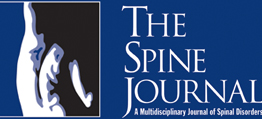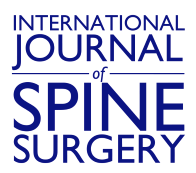
Abstract
BACKGROUND CONTEXT: Short- and mid-term studies have shown the effectiveness of cervical disc arthroplasty (CDA) to treat cervical disc degeneration. Upon completion of the 7-year Mobi-C FDA study, follow-up continued on a subset of CDA patients in the FDA study.
PURPOSE: The purpose of this study is to report the 10-year outcomes of a multicenter experience with cervical arthroplasty for 1- and 2-level pathology.
STUDY DESIGN/SETTING: This was a prospective cohort study of patients treated with cervical disc replacement at one or two contiguous levels using the Mobi-C® Cervical Disc.
PATIENT SAMPLE: Following completion of the 7-year FDA post approval study, follow-up continued to 10 years for consenting patients at 9 high-enrolling centers. The primary inclusion criteria were cervical degenerative disc at one or two contiguous levels and no prior cervical operations.
OUTCOME MEASURES: Outcome measures included NDI, VAS neck and arm pain, patient satisfaction, secondary surgical procedures (removals, revisions, reoperations, or additional fixation) and adverse events. Radiographic end points included segmental and global range of motion, sagittal alignment, adjacent level degeneration (ALD) and heterotopic ossification (HO). Radiographic ALD was defined with the Kellgren-Lawrence scale. HO was classified by the system adapted from McAfee and Mehren. Independent radiologists (Medical Metrics, Inc., Houston, TX) conducted radiographic evaluations.
METHODS: From the original enrollment of 257 CDA patients at 9 sites, 231 patients were eligible for follow-up after 7 years. Ten-year follow-up was obtained from 187 patients (81% follow-up). The longest follow-up was 11.2 years. Radiographs were obtained from 170 patients at 10 years. There were no significant differences in preoperative characteristics between these patients and the original FDA cohort.
RESULTS: Ten years after CDA, patients continued to show significant improvement from baseline NDI, VAS neck and arm pain, and neurologic function. Outcomes at 10 years were improved from results at 7 years for NDI at one (14.2 vs 18.7; p=0.12) and two levels (15.6 vs 19.7; p=0.02). Comparable results were observed for neck and arm pain. These improvements were less than the MCID for NDI and pain. There were no significant differences in outcomes between 1- and 2-level CDA at 10 years. Segmental flexion-extension range of motion remained significantly higher (p<0.01) than preop ROM. Segmental and global ROM, and sagittal alignment were maintained from 7 to 10 years. Clinically relevant ALD at 10 years was not significantly different from the 7-year incidence (p>0.05). The incidence of clinically relevant HO at 10 years was not significantly different from the 7-year incidence for 1-level (30.7% vs 29.6%; p=0.88) or 2-level (41.7% vs 39.2%; p=0.70) CDA patients. Only 2 subsequent surgeries were reported after 7 years. One patient underwent supplemental fixation at the index level 9.5 years after CDA. The other case was ACDF at a nonadjacent level unrelated to the CDA. Total incidence of subsequent surgery after 10 years was 4.7% (12/257) at the index level and 3.5% (9/257) at an
CONCLUSIONS: At 10-years, both 1- and 2-level CDA demonstrate sustained improvement of NDI, pain scores, range of motion and sagittal alignment compared to baseline. Progression of ALD and HO from 7 to 10 years was minimal. Our results through 10 years demonstrate that CDA with Mobi-C continues to be a safe and effective surgical treatment for patients with 1- or 2-level cervical degenerative disc disease.





